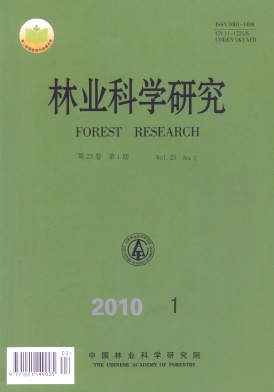|
[1]
|
罗氚芸,刘 勇,李 蕾,等. 云南民间药用琵琶甲无机元素及氨基酸分析[J]. 氨基酸和生物资源, 1999, 21(3):38-40
|
|
[2]
|
赵 敏,陈晓鸣,孙 龙,等. 云南省喙尾琵琶甲分布及生态环境调查[J]. 林业科学研究, 2007, 20(3):356-362
|
|
[3]
|
李维莉,谢金伦. 云南琵琶甲虫化学成分研究[J]. 昆明师范高等专科学校学报, 2000, 22(4):18-19
|
|
[4]
|
林南英,刘为忠,李维莉,等. 药用昆虫云南琵琶甲的化学成分研究[J]. 中国民族民间医药杂志, 2000(44):162-164
|
|
[5]
|
罗氚芸,刘 勇,李 蕾. 云南琵琶甲脂溶性抗菌活性成分的研究[J]. 中草药, 1999(8):566-567
|
|
[6]
|
李 蕾,迟胜起,李文鹏,等. 云南琵琶甲化学成分的抑菌活性[J]. 云南大学学报:自然科学版, 2000, 22(5):386-388
|
|
[7]
|
李 蕾,罗氚芸,刘 勇. 云南琵琶甲抗菌活性成分研究[J]. 中草药, 2001, 32(3):197-199
|
|
[8]
|
刘 勇,罗氚芸,李 蕾,等. 云南琵琶甲防御性分泌物抗菌活性及GC_MS分析[J]. 云南大学学报:自然科学版, 2000, 22(3):217-219
|
|
[9]
|
谢金伦,林南英,谢玉冰,等. 一种以云南琵琶甲提取物作为主要成份的抗菌消炎制剂 .中国专利, CN1415286
|
|
[10]
|
段云庆,张 波,马云华,等. 中药琵琶甲导入治疗乳腺增生症100例疗效观察[J]. 云南中医中药杂志, 2006, 27(3):9
|
|
[11]
|
任国栋,王新谱. 中国琵甲属八新种(鞘翅目:拟步甲科:琵甲族)[J]. 昆虫分类学报, 2001, 23(1):15-27
|
|
[12]
|
叶 晔,蒋 鹏,任国栋. 31属拟步甲的防御腺特征与系统发育关系初析[J]. 河北大学学报:自然科学版, 2003, 23(3):279-292
|
|
[13]
|
任国栋,杨秀娟,印 红. 基于防御腺的中国琵甲族Blaptini系统发育(鞘翅目:拟步甲科)[J]. 昆虫学报, 2002, 45(6):805-811
|
|
[14]
|
贾 龙,于有志. 9种琵甲族昆虫营养成分的测定分析[J]. 宁夏大学学报:自然科学版, 2007, 28(4):360-363
|
|
[15]
|
Gunbilig D, Boland W. Defensive Agents of Blaps femoralis, a traditional mongolia medicinal insect[J]. Scientia Pharmaceutica, 2009:1-8 |
|
[16]
|
张建英,于有志,贾 龙. 异距琵甲(鞘翅目:拟步甲科)生物学特性的研究[J]. 植物保护, 2005, 31(4):44-47
|
|
[17]
|
张建英,贾 龙,于有志. 戈壁琵甲(鞘翅目:拟步甲科)生物学特性的研究[J]. 宁夏大学学报:自然科学版, 2004, 25(3):264-267
|
|
[18]
|
Peschke K, Eisner T. Defensive secretion of the tenebrionid beetle, Blaps mucronata: Physical and chemical determinants of effectiveness[J]. J Comp Physiol A, 1987, 161:337-383 |
|
[19]
|
杨贵军,王新谱,于有志,等. 温度和土壤湿度对弯齿琵甲卵发育影响的初步研究[J]. 宁夏大学学报:自然科学版, 2002, 23(2):184-187
|
|
[20]
|
南京农学院. 昆虫生态及预测预报[M]. 北京: 农业出版社, 1985
|
|
[21]
|
党建涛. 西南天气[M]. 北京: 国防工业出版社, 2007
|
|
[22]
|
于有志,张建英. 弯齿琵甲生物学特性的研究[J]. 昆虫知识, 2005, 42(3): 290-294
|





 DownLoad:
DownLoad: